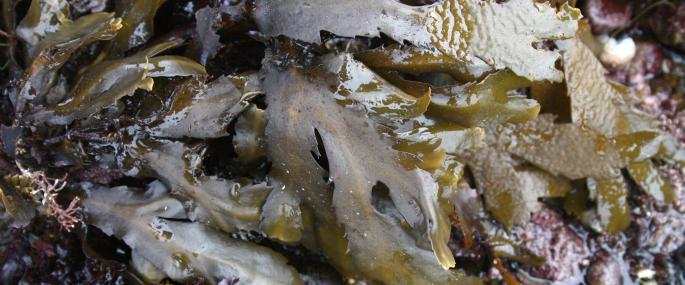Serrated, 'Saw' or 'Toothed' Wrack is a common 'wrack' seaweed that grows just above the low water mark on sheltered, rocky shores. Its fronds do not have air bladders but have serrated edges, hence the common names.
Serrated Wrack, and other species of seaweed, support a number of epiphytes (plants that grow on other plants) and provide food and shelter for all kinds of shore creatures from grazing molluscs to tiny fish. Our seas and coastline are in need of protection if we are to keep our marine wildlife healthy. The Wildlife Trusts are working with fishermen, researchers, politicians and local people towards a vision of 'Living Seas', where marine wildlife thrives. This work has recently had a massive boost with the passing of the Marine Bill, promising sustainable development of the UK's marine environment. Do your bit for our Living Seas by supporting your local Wildlife Trust.
